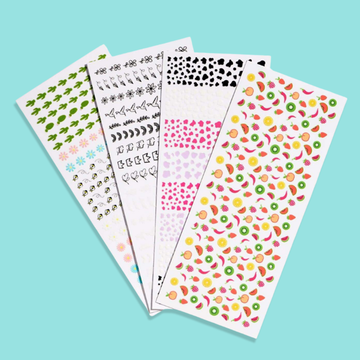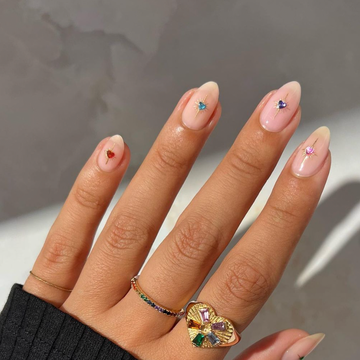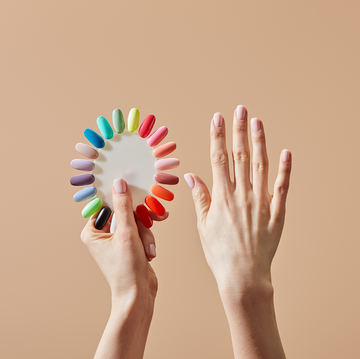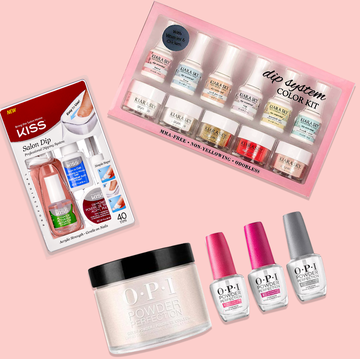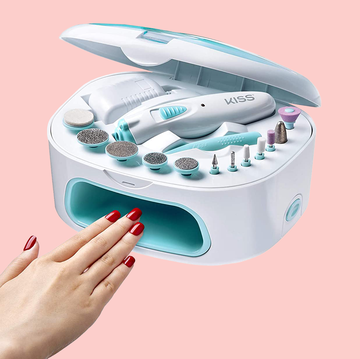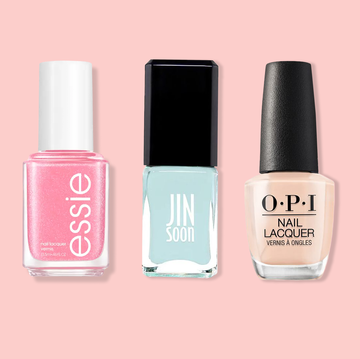Why is it so hard to grow and maintain gorgeous nails? One big reason: Nails aren't alive; they're dead (if they were living tissue, they could repair themselves instead of making us do it for them). If nails aren't alive, then how do they grow? Actually, they don't; new cells develop deep under your cuticles and push out the older, dead ones — forming those flat, hard surfaces we love to pamper and polish. Here's how to have yours looking great in no time.
Doctor Dos & Don'ts
DON'T SHARE YOUR NAIL FILE
Resist the urge to let anyone — even a relative — use your emery board. This tool is a porous germ-trapper. Keep yours to yourself, and replace it often.
DO WEAR THE RIGHT SHOE SIZE
Are you cramming your feet into too-small or too-pointy shoes? If so, your toenails may grow into the surrounding skin — causing the dreaded ingrown nail, which can lead to pain, swelling, and infection. When nails are too long, tight shoes can cause even more damage, says Mitchel P. Goldman, M.D., an associate clinical professor of dermatology at the University of California, San Diego. "If your toes hit the front of your shoe, nails can crack or turn black-and-blue. Or nails may lift, which can lead to infection."
DO MOISTURIZE DAILY
Nails need to be hydrated, since most problems crop up when they're parched. "Dry nails can crack, peel, and become brittle. Plus, dehydrated cuticles not only look ragged but also can turn into painful and infected hangnails," says Audrey Kunin, M.D., a Kansas City, Missouri, dermatologist. The best moisturizers are thick — even greasy. Try Elizabeth Arden Eight Hour Hand Cream.
DON'T GO BAREFOOT
Keep your shoes on while at public places (swimming pools, locker rooms, shoe stores) — if you don't, we won't be responsible for your toenail health. Why worry? "Warm, damp environments are a breeding ground for fungi and viruses," explains Phoebe Rich, M.D., a nail disorders expert and a clinical associate professor of dermatology at Oregon Health & Science University in Portland. Tip: If hose isn't offered when you're shoe shopping, ask for it.
TLC to Help Nails Grow
"Everyone has an individual rate at which her nails increase in length, and that can't be changed," says Paul Kechijian, M.D., a nail specialist and a former clinical associate professor of dermatology at New York University. On average, nails gain about one eighth of an inch per month. Their growth can be influenced by hormones (which is why pregnant women's nails grow like crazy) and temperature (more growth in summer than in winter). While most experts agree that there's no single food or pill that will speed nail growth, it's well-known that poor nutrition, infections, and aging can all slow it. "To keep nails healthy, hydrate them and minimize the use of harsh chemicals and tools," says Marsha Gordon, M.D., associate clinical professor of dermatology and vice chairman of the dermatology department at Mount Sinai School of Medicine. Help prevent breakage with a hardener like OPI Nail Envy.
The Facts About Fungus
These infections can settle in without your even realizing it. To be on the safe side, says Dr. Rich of Oregon Health & Science University, you should periodically remove any polish and inspect your fingers and toes. "Fungus is contagious and can spread from one nail to another — and even from nails to skin," she explains. "These infections aren't dangerous, but they can be painful and unsightly." What to know:
Causes
Humid places are fungus favorites, which helps explain why sweaty shoes and socks make toes more susceptible than fingers. Fungal nail infections account for about 50 percent of all nail disorders, according to the American Academy of Dermatology. Untreated athlete's foot and nail injuries can also make you prone to infection.
Warning Signs
Your nail is thickening, yellowing, crumbling, or lifting from its bed (as if it's about to fall off).
Treatments
The bad news: "Since the infection occurs under the nail plate or in the nail bed, successful treatment will take several months or more," says Dr. Rich, who suggests trying prescription oral medication (like Lamisil). For new or mild cases, a topical medication may help.
Prevention
Wash and dry your feet thoroughly. Keep your shoes on in public places. If your feet sweat a lot, change your socks often.
The Aging Nail
"As you get older, nails grow more slowly, become more brittle, and can also develop vertical ridges," says Dr. Gordon of Mount Sinai School of Medicine. One product that helps: Sally Hansen Age Correct Strength Treatment, left, which reduces breakage by fortifying the nail; it also fills in the ridges, making them less obvious. Buffing can also smooth the surface, but be gentle so you don't thin the nail and leave it even weaker.
Your Top Nail Questions
Q: Can I prevent peeling, breaking and splitting?
A: Exposure to water is most often the culprit here — surprisingly, the more you soak, the drier the nail becomes, weakening over time. Detergents in soaps, household cleansers, and some nail polish removers can also have adverse effects. Prevent further damage by wearing rubber gloves during chores (see page 70 for winners of a GH Institute glove test). After hand-washing, apply a rich moisturizer to nails to replace the natural oils that water washes away. Using a polish (even clear) or a cuticle oil (like Creative Nail Design SolarOil) will provide a protective shield.
Q: What's the best way to manicure my nails?
A: File in one direction only — sawing back and forth can cause splitting. Nails are strongest when you shape them into an oval, says Dr. Kunin of Kansas City. The pointier you make them, the likelier they are to break.
Q: What do those tiny white marks mean?
A: It's a myth that these flecks indicate a vitamin deficiency. More likely, they're the result of a minor injury and will disappear as the nail grows. But watch out for dark marks. If you recently hurt your hand (say, in a car door), don't worry. But if not, and you see a black, brown, or purple band on your nail, it could be a sign of skin cancer. See a doctor right away.



